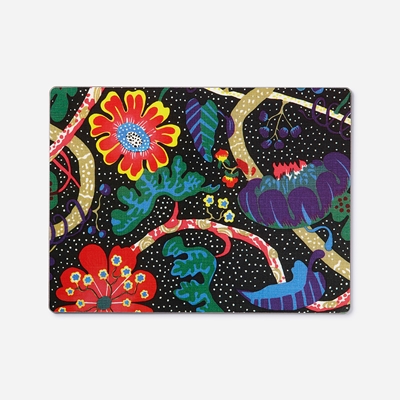Svenskt Tenn's placemats are available in several prints by Josef Frank, suitable for everyday use as well as for special occasions. The placemats are sold in a set of two. The backside is covered with grey flocked paper.
Josef Frank designed more than 160 prints for Svenskt Tenn, the majority of which contained imaginative botanical motifs. For Josef Frank, using nature’s colours and forms in interior design was a way to breathe and feel free in the enclosed space of a room. The Mirakel (Miracle) print probably got its name after Josef Frank’s comment: "It was a miracle that such a small repeat could be the source of something so grand". Mirakel is one of his earliest prints, designed back in the late 1920s.
Designer
Josef Frank/Svenskt Tenn


Svenskt Tenn developed this design using Josef Frank's print.
Josef Frank grew up in Vienna and studied architecture at Technische Hochschule (the Vienna University of Technology) in 1903 – 1908. In the 1920s he designed housing estates and large residential blocks built around common courtyards in a Vienna with severe housing shortages. In 1925, he founded the Haus & Garten interior firm together with architect colleague Oskar Wlach. Svenskt Tenn hired Josef Frank in 1934 and just a few years later he and Estrid Ericson made their international breakthrough. Although he was already 50 when he left the burgeoning Nazism in Vienna for Sweden, Frank is considered one of Sweden’s most important designers. Read More









































































